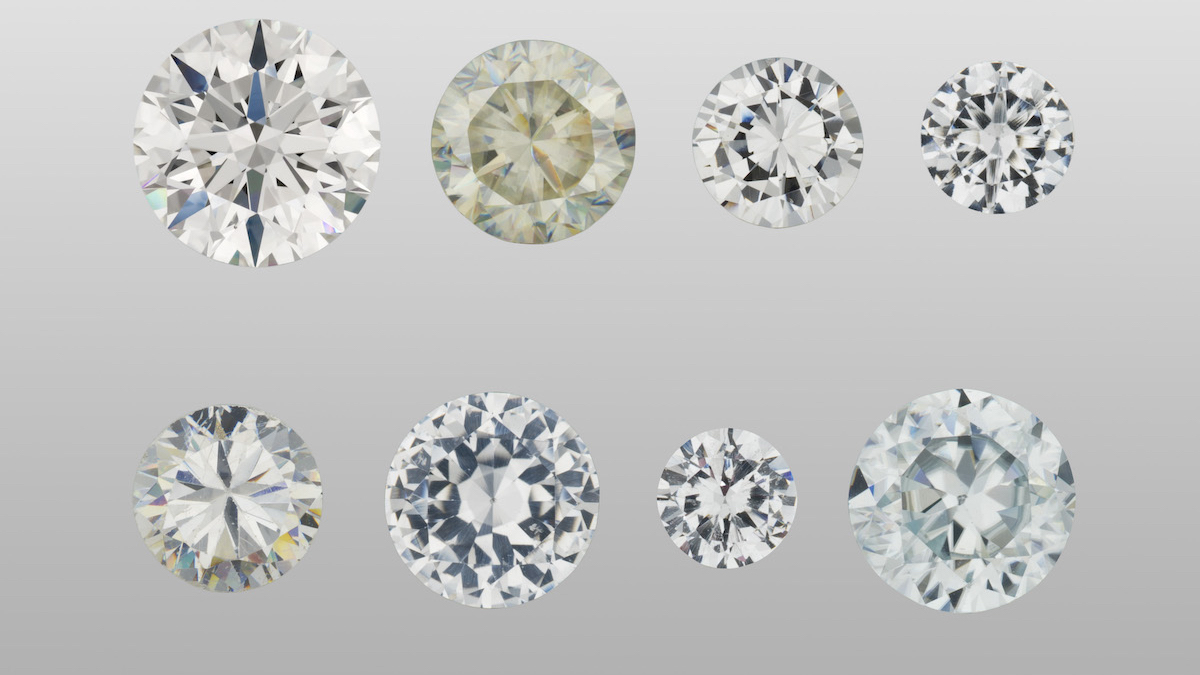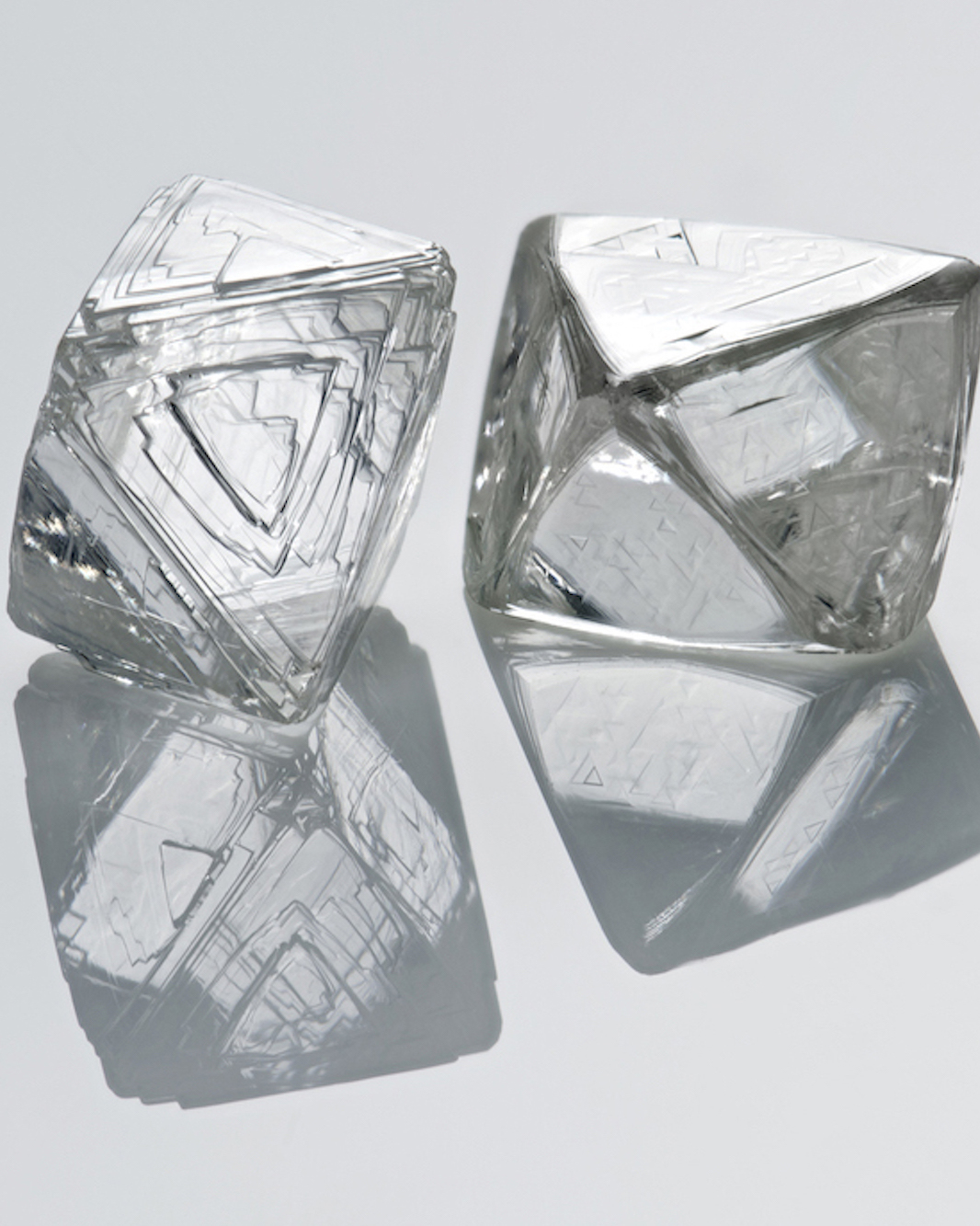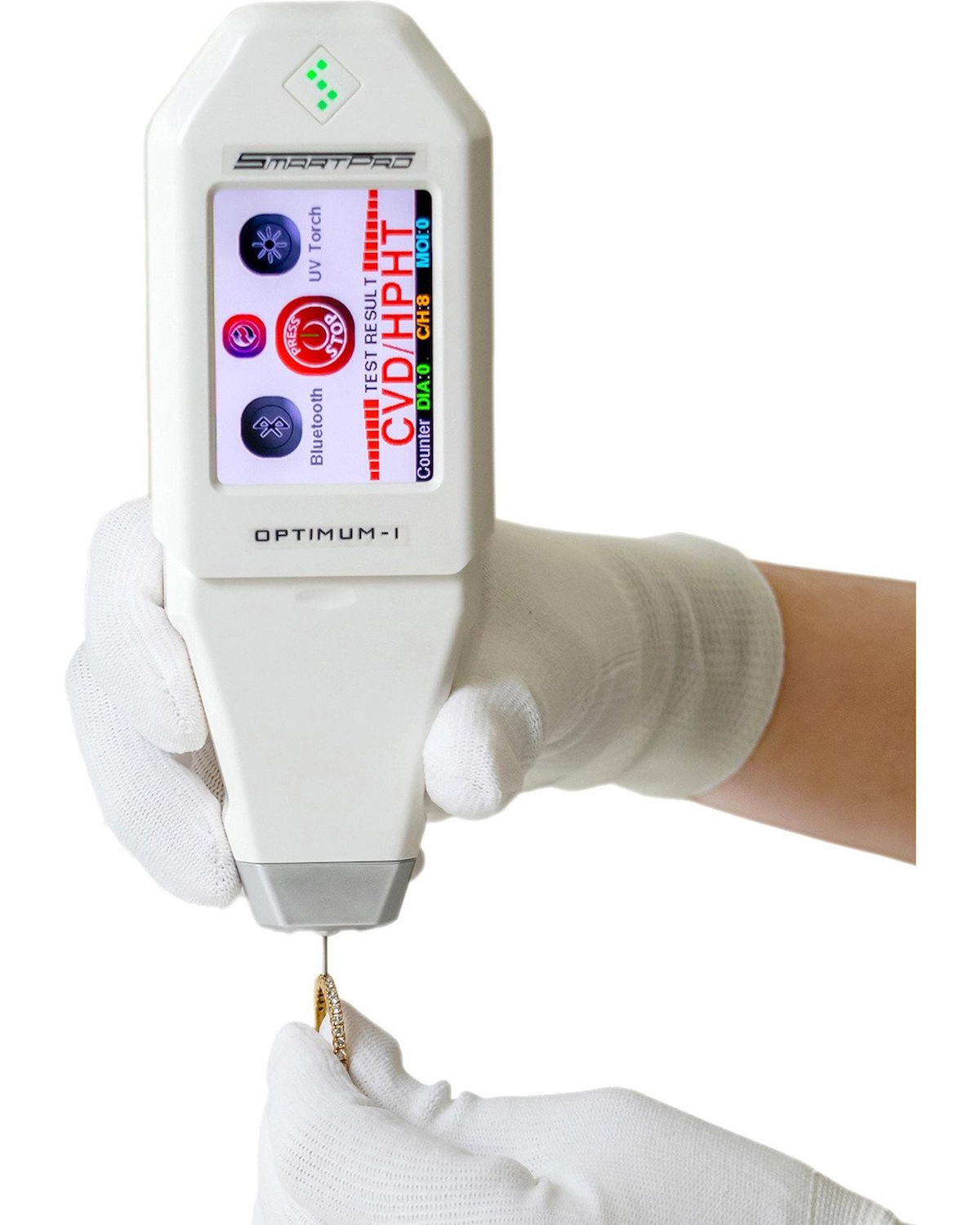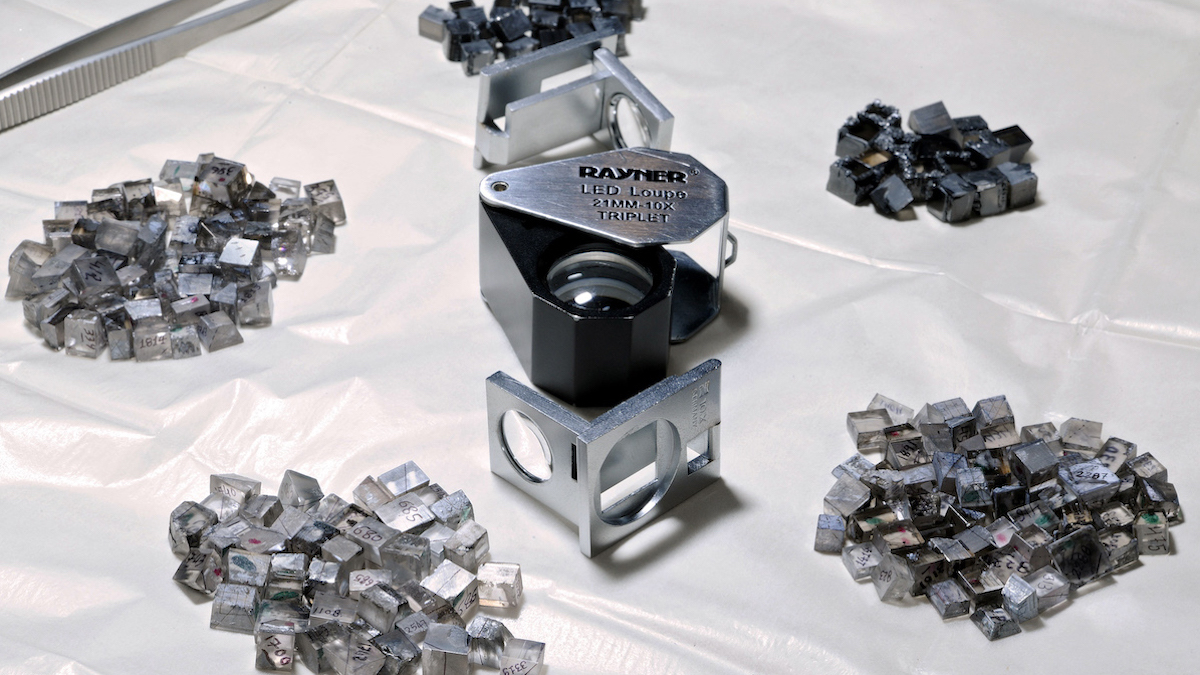What are Diamond Simulants and Lab-Grown Diamonds?

Natural diamonds, lab-grown diamonds, and diamond simulants; to the average person, most of these would look similar, but they have very different values. How do you know if your diamond is the real thing?
Throughout human history, people have sought to mimic objects of value. The intrinsic value and beauty of natural diamonds have made them one of the most imitated materials on earth. Stones intentionally made to look like natural diamonds, but are not crystallized carbon, are called diamond stimulants. Diamond simulants have been around for centuries as people look to replicate a natural diamond’s beauty but without its rarity and value. Lab-grown diamonds are also a man-made copy of a natural diamond, but because they are made of crystallized carbon, they are not considered a simulant. While diamond simulants and lab-grown diamonds can look like natural diamonds, it’s always possible for an expert to tell them apart. There are also ways you can tell if your diamond is the real thing at home. You’ll find many of these tips and tricks for diamond testing online, but what really works, and what is the best way to tell the difference?

Many different types of diamond simulants are on the market, and each one aims to imitate a natural diamond’s appearance. Being able to distinguish a diamond from a diamond simulant is important and, luckily, very easy for an expert. A diamond simulant usually stands out as fake because it does not reflect light like a natural diamond. A good rule of thumb would be if the stone doesn’t look quite right to you, it may not be real. Since natural diamonds are the hardest natural material, they very rarely get scratches, so if you see the stone has multiple scratches, it’s likely not the real deal. Another common test you see online is the ‘fog’ test. If you breathe hot breath on the stone like you’re fogging a mirror, and you can’t get the stone to fog there is a good chance the stone is real. However, this is not a foolproof test and should be treated more like a fun experiment. The most accurate way you can test your diamond at home is with a heat conductivity tester. These pen-sized testers cost less than $20 from Amazon and simply and quickly test the stone’s heat conductivity and will tell you if it is a diamond or not. If you are not an expert, then none of these tests are infallible. It is always recommended to ask an expert.
Cubic Zirconia
One of the most common diamond simulants is cubic zirconia (CZ), which is a synthetic material made of zirconium dioxide. CZ was first mass-produced in the 1970s as a less expensive alternative to diamonds. CZ has a hardness of 8 on the Mohs scale, which is less than the hardness rating of a diamond which is 10. CZ has a high refractive index, which means that it reflects light in a way similar to a diamond, giving it a sparkle that few simulants had before it. Recent advancements have seen CZ ‘coated’ with ‘diamond-like carbon’ or DLC, which can produce a version slightly more similar to a natural diamond in durability and light performance. Regardless, any expert can tell the difference between a CZ and a natural diamond.

Moissanite
Another common diamond simulant is synthetic moissanite. While moissanite is a naturally occurring silicon carbide, the man-made copy is what is usually used as a diamond simulant. Moissanite has a hardness of 9.25 on the Mohs scale, so it is more durable than most diamond simulants. However, moissanite is also ‘doubly refractive,’ which means it reflects light differently than a natural diamond, making them easy to distinguish.
White Sapphire
Lab-grown white sapphire is another diamond simulant that is relatively common. White sapphire can also be naturally occurring; its man-made copy is more common as a diamond simulant. Like other man-made replicas, its natural version is far more valuable. White sapphire is made of aluminum oxide and has a hardness of 9 on the Mohs scale, which makes it one of the hardest materials after a diamond. White sapphire reflects less light than a diamond and often has a more ‘milky’ appearance, making them easily distinguishable.

Lab Grown Simulants
Other less common diamond simulants include lab-grown spinel, glass, YAG (yttrium aluminum garnet), and GGG (gadolinium gallium garnet). All of these simulants are also lab-grown or man-made and fail to match a natural diamond’s hardness level of 10 on the Mohs scale, meaning they are not as durable. They all also have different visual properties that make them easily distinguishable from natural diamonds.
Quartz, Zircon, and Topaz
Diamond simulants can also be found in nature. These natural stimulants also mimic the visual properties of a diamond and include quartz, zircon, and topaz. Although natural, their relative abundance to natural diamonds means they are still far less valuable. They also fall behind diamonds in terms of hardness, with quartz a 7 on the Mohs scale, zircon a of 7.5, and topaz with a hardness of 8. Like man-made simulants, their visual properties are dissimilar enough from diamonds to make them easily distinguishable.

While the goal of a diamond simulant is to appear similar, they’re ultimately very different from natural diamonds, making them easily identifiable by an expert or with a diamond testing instrument. Lab-grown diamonds are also man-made, but unlike diamond simulants, they are made of crystallized carbon and possess the same physical and optical properties as natural diamonds. Their similarities make them more difficult to distinguish. The same methods used to detect diamond simulants will not necessarily work for lab-grown diamonds; they require an expert or a testing device made to test for lab-grown diamonds. While diamond simulants have been around for centuries, technological improvements have continued to make them less expensive. Their large difference in value from natural diamonds makes understanding and detecting the differences between natural diamonds, diamond simulants, and lab-grown diamonds more important than ever.
